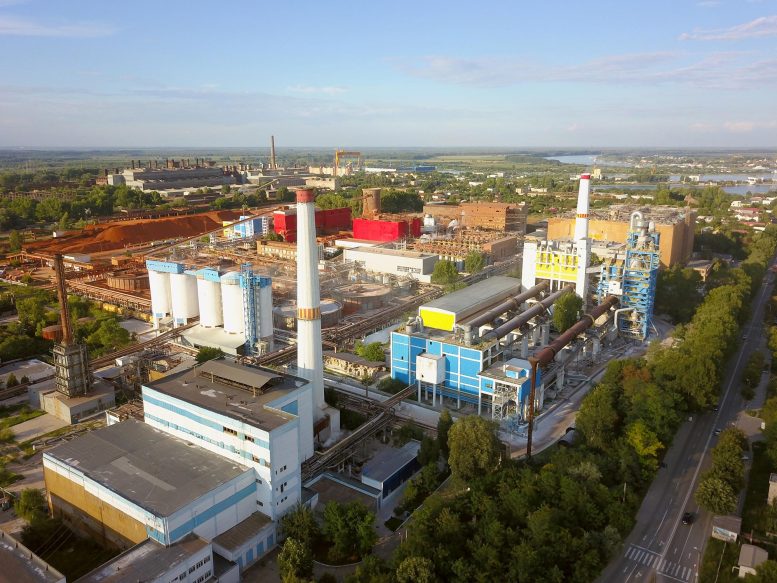Aristarchus Crater on the moon. Credit: NASA/GSFC/Arizona State University
Alongside advances in space exploration, we’ve recently seen much time and money invested into technologies that could allow effective space resource utilization. And at the forefront of these efforts has been a laser-sharp focus on finding the best way to produce oxygen on the Moon.
In October, the Australian Space Agency and
Alumina (aluminum oxide) refinery. Aluminum is produced in two stages. Before pure aluminum can be released using electrolysis (in what is known as the Hall-Heroult process), alumina refineries must first refine naturally occurring bauxite ore to extract the alumina (from which pure aluminum is later retrieved).
It’s a pretty straightforward process, but there is a catch: it’s very energy hungry. To be sustainable, it would need to be supported by solar energy or other energy sources available on the Moon.
Extracting oxygen from regolith would also require substantial industrial equipment. We’d need to first convert solid metal oxide into liquid form, either by applying heat, or heat combined with solvents or electrolytes. We have the technology to do this on Earth, but moving this apparatus to the Moon – and generating enough energy to run it – will be a mighty challenge.
Earlier this year, Belgium-based startup Space Applications Services announced it was building three experimental reactors to improve the process of making oxygen via electrolysis. They expect to send the technology to the Moon by 2025 as part of the European Space Agency’s In-Situ Resource Utilization (ISRU) mission.
How much oxygen could the Moon provide?
That said, when we do manage to pull it off, how much oxygen might the Moon actually deliver? Well, quite a lot as it turns out.
If we ignore oxygen tied up in the Moon’s deeper hard rock material — and just consider regolith which is easily accessible on the surface — we can come up with some estimates.
Each cubic meter of lunar regolith contains 1.4 tonnes of minerals on average, including about 630 kilograms of oxygen. NASA says humans need to breathe about 800 grams of oxygen a day to survive. So 630kg oxygen would keep a person alive for about two years (or just over).
Now let’s assume the average depth of regolith on the Moon is about ten meters, and that we can extract all of the oxygen from this. That means the top ten meters of the Moon’s surface would provide enough oxygen to support all eight billion people on Earth for somewhere around 100,000 years.
This would also depend on how effectively we managed to extract and use the oxygen. Regardless, this figure is pretty amazing!
Having said that, we do have it pretty good here on Earth. And we should do everything we can to protect the blue planet — and its soil in particular — which continues to support all terrestrial life without us even trying.
Written by John Grant, Lecturer in Soil Science, Southern Cross University.
This article was first published in The Conversation.
